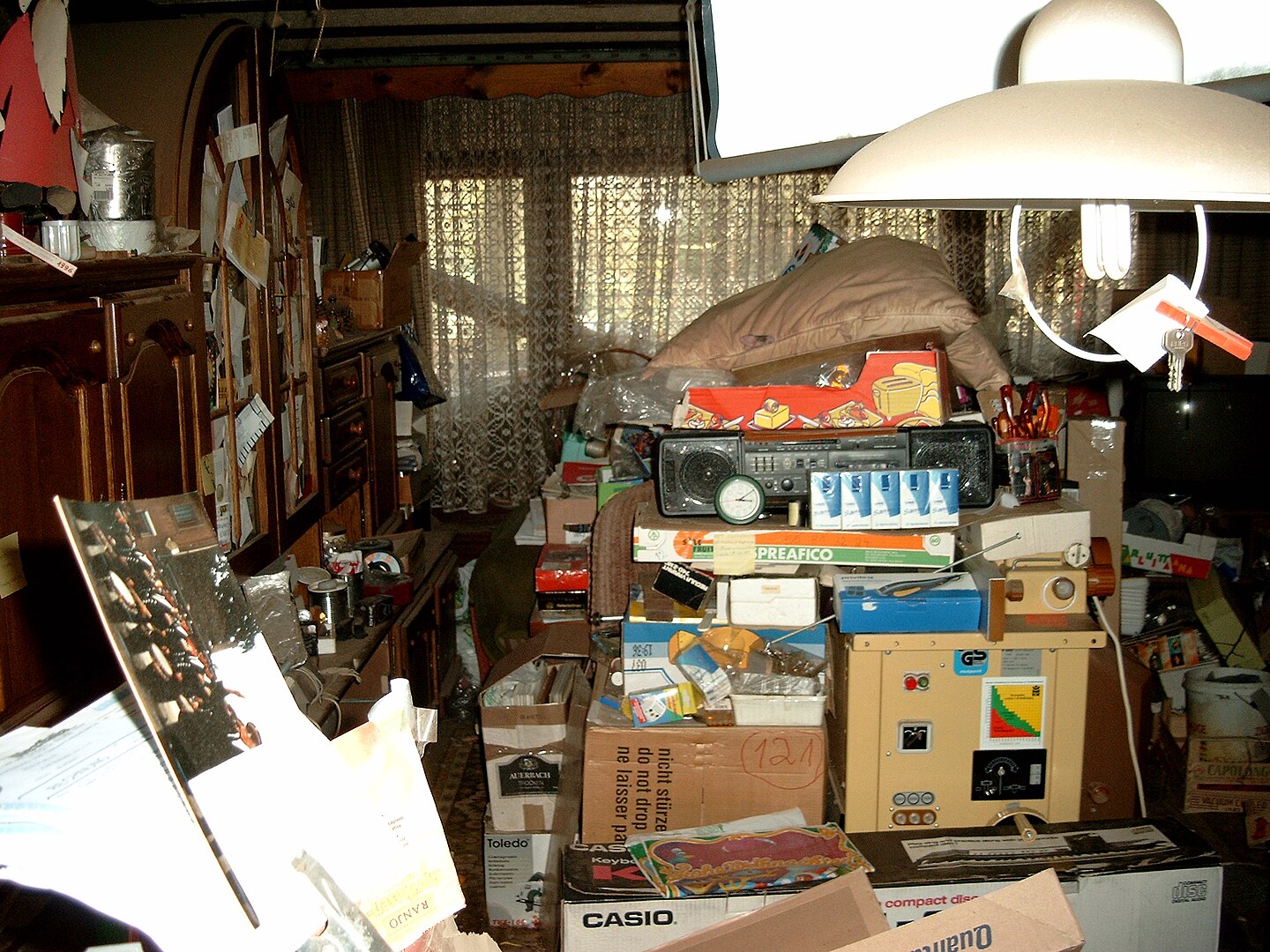
Apartment of a compulsive hoarder (Photo By Grap/Wikimedia Commons, CC BY-SA 3.0)
A lot of people think of hoarding as something extreme – a home crammed to the ceiling with possessions. But it tends to start gradually, and research has found it can begin in adolescence or even childhood.
The information people have about it often comes from documentaries about severe cases, focusing on overflowing piles of possessions. But this narrow view of what hoarding is means people often don’t get help until the behaviour is devastating their lives.
Psychologists still don’t fully understand why people hoard. It was only as recently as 2013 that hoarding disorder was added to the fifth edition of the Diagnostic and Statistical Manual of Mental Disorders, a guide used by clinicians in the US.
Early intervention could make a life-changing difference to people who struggle with hoarding behaviour, their families and the communities they live in. It could also help children with hoarding tendencies to learn how to manage their possessions.
It can start from childhood
Participants in retrospective studies of adults found the median age hoarding behaviour began was 11-15.
As part of my PhD research, I interviewed several people with hoarding behaviour who described attachments to possessions and difficulty in discarding them from childhood.
Some participants said hoarding tendencies and behaviour had either begun, or became more difficult to manage, when they started university.
One participant felt his hoarding difficulties started when he left university. He said the responsibility that came with “the end of … student accounts” led to trouble discarding things. This was not something my PhD team and I had heard of before.
Some of our participants talked about how, in childhood, their families had encouraged them to discard possessions, or had discarded them for them. This was distressing for several reasons, including the emotional attachment they had formed to these possessions.
Previous research has suggested that when children exhibit hoarding tendencies, parents may help to keep them in check. Parents may also control the child’s living space by tidying or discarding possessions for them, although the latter may make hoarding tendencies worse.
One of the hallmarks of hoarding is that the attachments to possessions can be quite similar to those that non-hoarders form, but they’re stronger and related to a wider range of things. This causes attachments to things that others would see as having little or no value. There’s always a use, a story, an emotion or a memory attached to a possession for someone who hoards.
If we want to understand how best to help people with hoarding tendencies, we need more studies into hoarding during childhood so we can understand why it is so much harder for some children to organise and discard things.
How does it start?
There are different routes to hoarding, with some researchers suggesting that it can start in childhood with no apparent trigger. For other people, it happens later in life and is triggered by a particular event. For example, research shows a link between events such as relationship changes and the beginning or worsening of hoarding symptoms.
We do know hoarding can be associated with difficulties in processing information, early emotional deprivation, traumatic events and the meanings that people attach to their possessions. These meanings often include valuing possessions for their future usefulness or seeing them as repositories for memory.
Before things get extreme
Early intervention is important in adults too. One of the hallmarks of hoarding disorder is an accumulation of possessions which clutter and congest the active living areas of a person’s home, such as their kitchen or bathroom rather than their attic or garage.
It’s understandable that psychologists use this as a benchmark given that many people gather a lot of possessions but not everyone has a hoarding disorder. And there’s no need to pathologise people who are just keen collectors.
But hoarding situations where people are unable to cook in their kitchen, wash in their bathroom, entertain friends or even live in their living room, do not happen overnight. Hoarding behaviour starts long before someone’s possessions take over their home. The longer it goes on for, the harder it is for the person to address it.
My PhD focused on understanding the processes which lead people to these kinds of situations. I used the term hoarding behaviour to include less extreme circumstances.
The result of my research was a model called “struggling to manage”. It conceptualised hoarding as a set of connected difficulties in people with managing both possessions and life.
Unlike other models which focus more on thoughts and behaviour, the struggling to manage model asked what difficulties a person has with keeping on top of their possessions while life happens around them.
It included things like undergoing life transitions where a person’s relationship with possessions might change. For example, when they move house or are navigating health challenges, and situations where lots of life events happen at once.
Hoarding behaviour is a spectrum. If you’re interested to know more, there are plenty of online resources with information and support services, including community interest company Clouds End.
We need to look beyond the clutter and disorganised possessions to see what’s going on beneath the physical stuff.![]()
Victoria Ruby-Granger, Lecturer in Psychology, De Montfort University
This article is republished from The Conversation under a Creative Commons license. Read the original article.





















